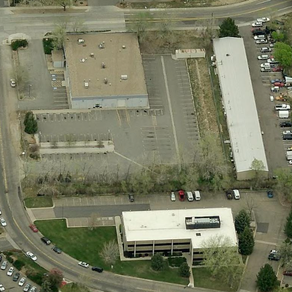East Area Plan Benefits Developers, Not People
- DENVER YIMBYs for GOOD
- Nov 9, 2020
- 3 min read
Updated: Nov 9, 2020
We wanted to share this great opinion piece about the East Area Plan from one of our residents.

Blueprint For Neighborhoods Does Not Adequately Address Parks, Traffic, Height, Affordability
By Blair Taylor, for the GPHN
In 2017, the city initiated a series of small area planning efforts, including the East Area Plan (EAP). The briefing book for the plan, which includes the neighborhoods of Park Hill, East Colfax, Hale, and Montclair, states its purpose is to “inform how things should evolve in the future for the benefit of the community.” The reality is that the plan does not guarantee what is widely recognized as needed and desired in terms of level of affordability, family suitable units, and open space.
City planners have been charged with identifying how they can accommodate 4,500 new units in the EAP, currently home to 33,000. A variety of strategies were included in the drafts, including up-zoning buildings along Colfax to as high as 10 stories and transforming large homes into multi-unit condos. In the current draft, the majority of the population increase would be carried between 13th and 17th avenues from Colorado Boulevard to Yosemite Street at the eastern edge of the city – increasing that area’s population about 300 percent.
Despite receiving hundreds of comments of opposition, the Denver Planning Board recommends removing the provision “single unit areas should remain primarily single unit.” This “surprise” recommendation came without consideration for the years of negotiating the community has already done to protect the neighborhood’s modest and affordable single-family homes from being scraped and replaced with pricey duplexes.
Denver planners have stated they cannot or will not force developers to put in sidewalks, parks, or transitional height for high-rises. These are some of the concerns that residents have expressed, in addition to the lack of flood mitigation and concerns over increased traffic in the neighborhoods.
While listed as a priority, the only park that has been incorporated is one based off of the city’s incentive program, offering increased building height in exchange for “community benefits.” What that means, is if the developer chooses not to pursue the offer, there is no benefit and they can build what is allowed.
Consider this: The majority of Colfax is already zoned at three to five stories and has not been built to capacity. In the Mayfair Town Center at 14th and Krameria, the developer would gain the ability to increase building height to seven stories. There is a caveat – that if public open space is included, the size is unspecified. Including a courtyard in a development this size seems to be in the interest of the developer, so is this really a negotiating point? With historical flooding in this exact location, creating a multi-use amenity for shoppers and restaurant tenants seems obvious.
As the plan is currently written, affordable housing is treated in a similar manner. Developers are not altruistic in their building habits, and the city doesn’t force it. Developers would prefer to pay a fee, which is pennies per square foot, into a fund that has not significantly grown in recent years – even as the demand for affordable housing has exploded. Under the draft plan, the most acceptable scenario for on-site affordable units is 10 percent (depending on its size) of the total units in a new construction development over five stories, offered at 80 percent Average Median Income [AMI] (less than $80,000 for two people). What service providers know is that families at a much lower AMI, about 30 percent (less than $40,000 for two people), is where the real need lies.
In many peer cities, on-site units are required in any development over 20 units. Despite the facts, supporters of the East Area Plan consistently claim this is a fix for affordable housing and people experiencing homelessness. In truth, the plan will benefit investors, not the people most in need of housing.
Legislative stops should be in place in advance to ensure homes are not flipped, residents are not displaced, pedestrians are provided for, and traffic can be mitigated. One of the most consistent complaints of residents is displacement and gentrification of our working class residents, teachers, nurses, small business owners, and restaurant staff.
The East Area Plan was presented under the guise of “strong and authentic neighborhoods; economically diverse and vibrant; equitable, affordable and inclusive; and well-connected, safe and accessible places.” These elements are not addressed, not now or 20 years from now.
We all love our neighborhood. There could be a plan that benefits our current and future residents, and this is not it.
City Council is scheduled to vote on the East Area Plan on Monday, Nov. 9. Reach out to your Councilmembers and let them know what you think.








Comments